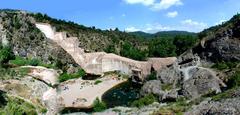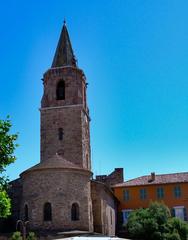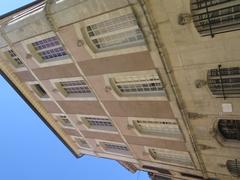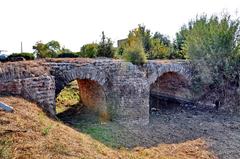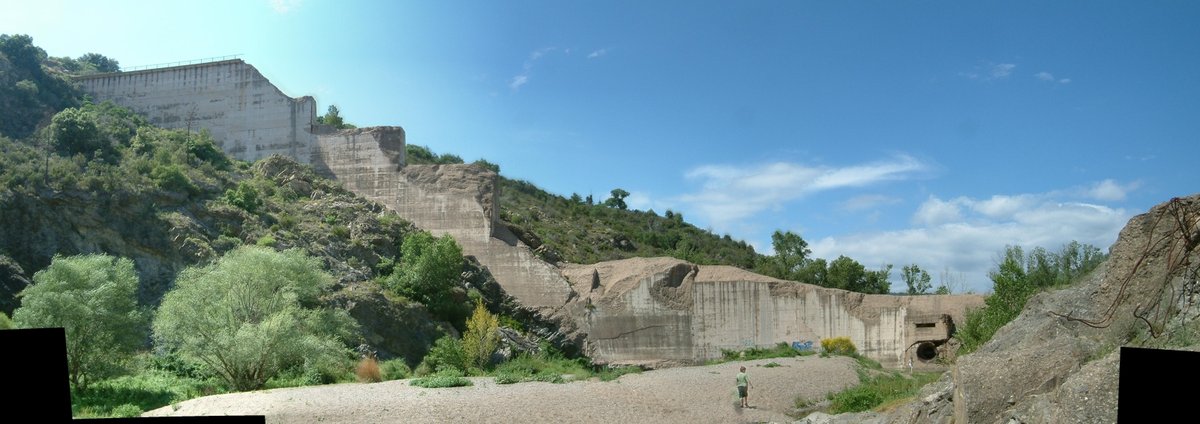
Malpasset Dam Visiting Hours, Tickets, and Fréjus Historical Sites Guide
Date: 14/06/2025
Introduction
The Malpasset Dam near Fréjus, France, is both a silent witness to one of the most significant engineering disasters of the 20th century and a powerful site of remembrance and learning. Constructed in the 1950s to support the agricultural and urban demands of the Côte d’Azur region, the dam’s catastrophic failure in 1959 resulted in the loss of 423 lives, reshaped dam safety protocols worldwide, and left an indelible mark on the local community. Today, the ruins stand as a poignant outdoor museum, offering visitors a unique opportunity to reflect, learn, and honor those affected. This guide provides comprehensive information on visiting hours, ticketing, guided tours, hiking options, accessibility, and practical tips for an enriching visit to both the Malpasset Dam and nearby Fréjus attractions (ScienceDirect; Esterel Côte d’Azur; Fréjus Tourist Office).
Table of Contents
- Introduction
- History: Origins, Construction, and Disaster
- Aftermath: Investigations and Legacy
- Visiting Information: Hours, Tickets, and Tours
- Getting There and Site Layout
- Hiking Trails and Visitor Experience
- Memorials and Educational Value
- Nearby Fréjus Attractions
- Practical Tips and Safety
- FAQs
- Conclusion
- Sources
History: Origins, Construction, and Disaster
Origins and Construction
The Malpasset Dam, conceived post-World War II, was built to regulate the Reyran River for irrigation and water supply. Completed in 1954, it was a thin double-curvature arch dam, stretching 223 meters long and 66 meters high, with a reservoir capacity of about 50 million cubic meters. The site was chosen for its apparent geological suitability, but subsequent investigations revealed that the fractured gneiss foundation was far less stable than believed (ScienceDirect).
The 1959 Catastrophe
After an exceptionally rainy autumn, the dam’s reservoir neared capacity. Despite warnings from local engineers about seepage and cracks, no decisive action was taken. On December 2, 1959, at 9:13 PM, the dam suddenly failed. A wave of more than 50 million cubic meters of water surged down the Reyran Valley, reaching heights up to 40 meters and speeds over 70 km/h. The city of Fréjus, just downstream, was devastated in minutes. The disaster resulted in 423 deaths, thousands left homeless, and massive destruction of property and infrastructure (Esterel Côte d’Azur).
Aftermath: Investigations and Legacy
Investigations and Causes
Post-disaster analyses identified a combination of engineering and geological errors. The fractured gneiss bedrock allowed water infiltration beneath the dam, weakening its foundation. The design, while efficient under ideal conditions, left little margin for error. Insufficient drainage, monitoring, and crisis management further compounded the tragedy (ScienceDirect).
National and International Response
France and the world responded with immediate rescue efforts. President Charles de Gaulle’s visit and his statement, “Que Fréjus renaisse!” (“Let Fréjus be reborn!”), became a rallying cry for the community’s recovery (Esterel Côte d’Azur). The disaster directly prompted the overhaul of dam safety standards, requiring rigorous geological surveys, continuous monitoring, and comprehensive emergency protocols (French Ministry for Sustainable Development).
Commemoration and Memorials
Memorials honoring the 423 victims were established soon after the disaster. The first, “The Recumbent Figure,” was installed in 1963, followed by a larger monument in 2009 near the Roman amphitheater—engraved with names of the victims and de Gaulle’s words. Annual ceremonies continue to honor their memory (Fréjus Tourist Office).
Visiting Information: Hours, Tickets, and Tours
Visiting Hours
- Open Access: The Malpasset Dam site is open year-round, generally from dawn to dusk. There are no gates or ticket booths.
- Temporary Restrictions: Access may be limited during or after heavy rain due to flood risk. Always check local advisories on the Fréjus Tourist Office website before your visit.
Tickets
- Independent Visits: Free of charge.
- Guided Tours: Offered by the Fréjus Tourist Office, usually from April to June and September to December, with most tours in French. Tickets for guided tours are €8 (adults), €5 (youth 12–17), and free for children under 12. Advance booking is recommended (Esterel Côte d’Azur).
Accessibility
- The main trail from parking to the dam base is relatively short but can be uneven. The site is not fully accessible for wheelchairs or strollers due to rocky ground.
Getting There and Site Layout
- By Car: The site is about 7 km north of Fréjus. Follow the D37 road from the Fréjus autoroute exit; parking is signposted “Malpasset” (Beyond.fr).
- Parking: Free parking is available near the trailhead.
- Public Transport: Take a train or bus to Fréjus, then use a taxi or bike rental to reach the site.
Facilities at the dam are minimal—no restrooms, food vendors, or visitor centers. Bring all necessities with you (Holiday Green).
Hiking Trails and Visitor Experience
- Easy Walk: <1 km from parking to dam base; suitable for most visitors.
- Medium Loop: About 5 km, including a climb to a panoramic belvedere.
- Longer Hikes: Extend into the Esterel massif for experienced hikers.
Trails are well-marked, but surfaces are rocky and can be steep. Sturdy shoes are essential. The Reyran riverbed is usually dry in summer but can flood rapidly after rain—exercise caution (Fréjus Tourist Office; Beyond.fr).
Memorials and Educational Value
The site is both a place of reflection and an open-air classroom for engineering, geology, and disaster management. Interpretive panels explain the dam’s history and the 1959 tragedy. Guided tours provide in-depth context. The memorials—including the 2009 monument and “The Recumbent Figure”—are focal points for annual ceremonies and remembrance (Fréjus Tourist Office; Tikayan).
Nearby Fréjus Attractions
Enhance your trip by visiting other nearby sites:
- Roman Amphitheater and Aqueducts: Ancient engineering marvels.
- Cathedral of Saint-Léonce: Notable for its architecture and mosaics.
- Fréjus Museum of Archaeology and History.
- Esterel Massif: Extensive hiking and biking trails.
- Mediterranean Coast: Beaches and promenades (Tikayan).
Practical Tips and Safety
- Wear sturdy shoes and bring water/snacks—no facilities on-site.
- Check weather and local advisories before your visit.
- Supervise children near the dam remains and riverbed.
- Respect all memorials and interpretive signage.
- The best photography times are early morning or late afternoon.
- Inform someone of your plans before hiking, as the area is unstaffed and remote.
FAQs
What are the Malpasset Dam visiting hours? The site is open year-round from dawn to dusk.
Is there an entrance fee? No, visiting the dam and memorial is free.
Are guided tours available? Yes, seasonally through the Fréjus Tourist Office (primarily in French). Advance booking is advised.
Is the site wheelchair accessible? No, the terrain is rugged and uneven.
How do I get there by public transport? Take a train or bus to Fréjus, then use a taxi or bike rental to reach the dam site.
Conclusion
The Malpasset Dam site offers a unique blend of history, engineering insights, and natural beauty. Its open access, informative trails, and powerful memorials make it a must-visit for those interested in history, disaster management, or the evolution of civil engineering standards. Combine your visit with nearby Fréjus historical sites for a rich cultural experience.
For up-to-date information, guided tour schedules, and maps, visit the Fréjus Tourist Office. Download the Audiala app for mobile guides and follow us on social media for event announcements and travel tips.
Sources
- Esterel Côte d’Azur – Malpasset Memorial
- Esterel Côte d’Azur – The Malpasset Dam
- Beyond.fr – Malpasset Dam
- Perfectly Provence – Malpasset Dam
- French Ministry for Sustainable Development
- ScienceDirect – Malpasset Dam
- Tikayan – Malpasset Dam
- Holiday Green – Malpasset Dam
- Fréjus Tourist Office – Malpasset Dam

